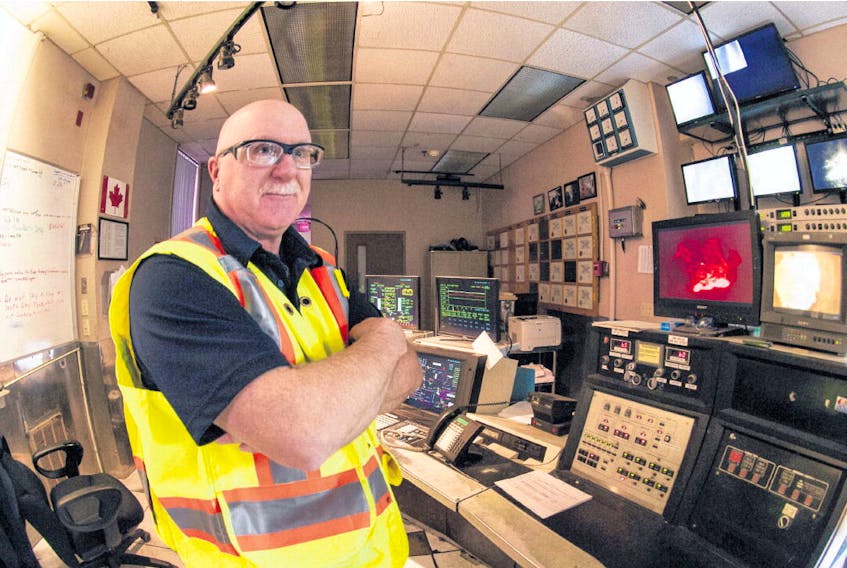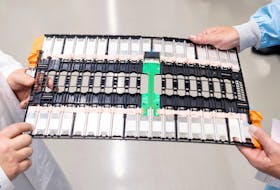Two years before it’s supposed to be running, Nova Scotians don’t have an estimated cost to replace Northern Pulp’s treatment facility or what portion they, as taxpayers, will have to cover.
The provincial government and Northern Pulp haven’t even yet sorted out who will own the facility that has to be working by 2020 when the existing treatment plant at Boat Harbour is legislated to close.
“Details around who owns and operates the effluent treatment facility, and who pays for it, are all part of negotiations which have yet to occur,” said Marla MacInnis, spokeswoman for the Department of Transportation and Infrastructure Renewal in an emailed response to The Chronicle Herald on Wednesday.
The province built the Boat Harbour effluent treatment site in 1972. For the five years prior to that, the mill’s former owners had just been dumping untreated effluent nearby. In 1995, the province turned over management but not ownership of the facility to Northern Pulp’s then owners Scott Maritimes Ltd.
An indemnity agreement signed by the province and Scott Maritimes as part of the 1995 deal protects the mill’s owners from any “liabilities, losses, claims, demands, actions, causes of action, damages (including, without limitation, lost profits, consequential damages, interest, penalties, fines and monetary sanctions)” relating to Boat Harbour.
The document goes on to state, “This undertaking and indemnity shall extend to all claims made by any person or government
made on their own behalf, on the public’sbehalf . . . or on behalf of any other party.”
And finally, it protects the mill’s owners against “the cost of diverting or altering components of the facility in response to claims.”
In 2011, Northern Pulp was bought by its current owner Paper Excellence Canada Holdings Corp. of British Columbia.
The maker of northern bleached softwood kraft pulp, a strengthener used in tissues and paper, has a lease until 2030 to use Boat Harbour under which it pays $25,000 a month to the province and covers the treatment facility’s operating costs.
General manager Bruce Chapman told The Chronicle Herald on Tuesday that because the lease has value to the mill, the province will be pressed during negotiations to provide compensation for ending it a decade early.
Asked if he could appreciate the concern of taxpayers who are already footing the bill for cleaning up historic contamination at Boat Harbour (for which the province has set aside $133 million) with being asked to help fund a new facility, Chapman responded, “I would also be concerned with a province or any entity that makes a contract then arbitrarily breaks it.”
Gary Porter said he could understand the concerns of taxpayers.
“I completely understand,” said the executive director of corporate initiatives for the Department of Transportation and Infrastructure Renewal.
“The design work going on now is intended to develop the cost estimate that once known will be the basis for negotiations.”
Those negotiations will include who will own the new activated sludge treatment facility. An environmental assessment is underway for the new facility, which will be located on the mill’s Abercrombie Point property and emit cleaner effluent at its tail end in the Northumberland
Strait rather than the current Boat Harbour facility.
Also part of the negotiations will be provincial support for the addition of a $70-million oxygen delignification process into the mill that will reduce its use of chlorine dioxide by 30 to 40 per cent.
The provincial government has long been a funding/lending partner of large capital infrastructure projects at the mill.
Most recently the province loaned Northern Pulp $9.5 million and gave it $2.5 million toward the installation of a $35-million electrostatic precipitator on its recovery boiler in 2015.
Chapman said the company put $23 million toward the project upfront and then paid off the province’s loan with interest while creating 187,000 person hours of employment and significantly reducing the mill’s emissions.
Paper Excellence has also been investing its own money into the mill without government support. Five years ago they installed a $5-million chipper, recently bought six new big loaders and made top-ups to the pension plan.
“We are committed to doing better and we have done better over the last couple of years,” said Chapman.
“One of the problems we have is a bad history at Boat Harbour over the last 50 years.”
When the Liberal government was elected in 2013, Premier Stephen McNeil took a tough line with the mill.
“We made it very clear there would be no forgivable loans under our administration, so that was off the table before we started,” McNeil told a business luncheon in Halifax in 2014.
“It is the role and responsibility of this company to move forward (on its own).”
With more investments in the mill from the province apparently coming, it raises the question of the government’s role in supporting the financial needs of private industry.
“We need a sustainable future for the mill from a business perspective and from an environmental perspective,” Porter said.
The mill directly employs 339 people and spends over $300 million a year, primarily on wages and wood fibre — creating employment for hundreds more woods harvesters.
“If Northern Pulp shut we’d be closed within a year,” said Eric Williams, co-owner of Williams Brothers Ltd., a sawmill in Barneys River that employs 26 people.
“All across the province mills would shut. Harvesters, all those truckers, would all be done.”
The closure of the Bowater Mersey mill in Brooklyn and paper machine one at Point Tupper left Nova Scotia with only Northern Pulp and paper machine two at Port Hawkesbury Paper — cutting fibre demand for pulp in half.
Seventy truck loads of logs come into Northern Pulp daily from around the province and are sorted — straight logs without rot are sent to sawmills while low quality and small sticks are chipped for pulp on site. Sawmills send their woodchips and bark back to the mill to be turned into pulp or burned as biomass to make electricity on site.
“I’m not saying support the mill’s survival at all costs,” said Williams.
“I do say this should be fixable. It’s not this government that caused this problem, it’s a succession of governments. When the mill was making money, everyone knew they had a problem and no-one forced to fix this. This owner doesn’t give two hoots — if he can’t make money here, he’ll just shut her down because he has too many investments elsewhere.”
Paper Excellence is wholly owned by Indonesia’s Widjaja family has been buying up financially troubled mills over the past decade and now has six in Canada and two in France.
Since purchasing Northern Pulp, it has redirected its product into the rapidly growing Chinese market — now 90 per cent of Abercrombie Point’s kraft pulp is shipped to Asia, making Northern Pulp the largest exporter out of the port in Halifax.
“If you are operating a softwood kraft pulp mill right now, you have to be making money — the market is on fire,” said Kevin Mason, managing director at ERA Forest Products Research of Gibson, B.C.
“A big new mill just started in Finland but other than that there’s nothing big on the horizon for the next two to three years. After a little correction, we’re set up for a very good pulp market over next several years.”









